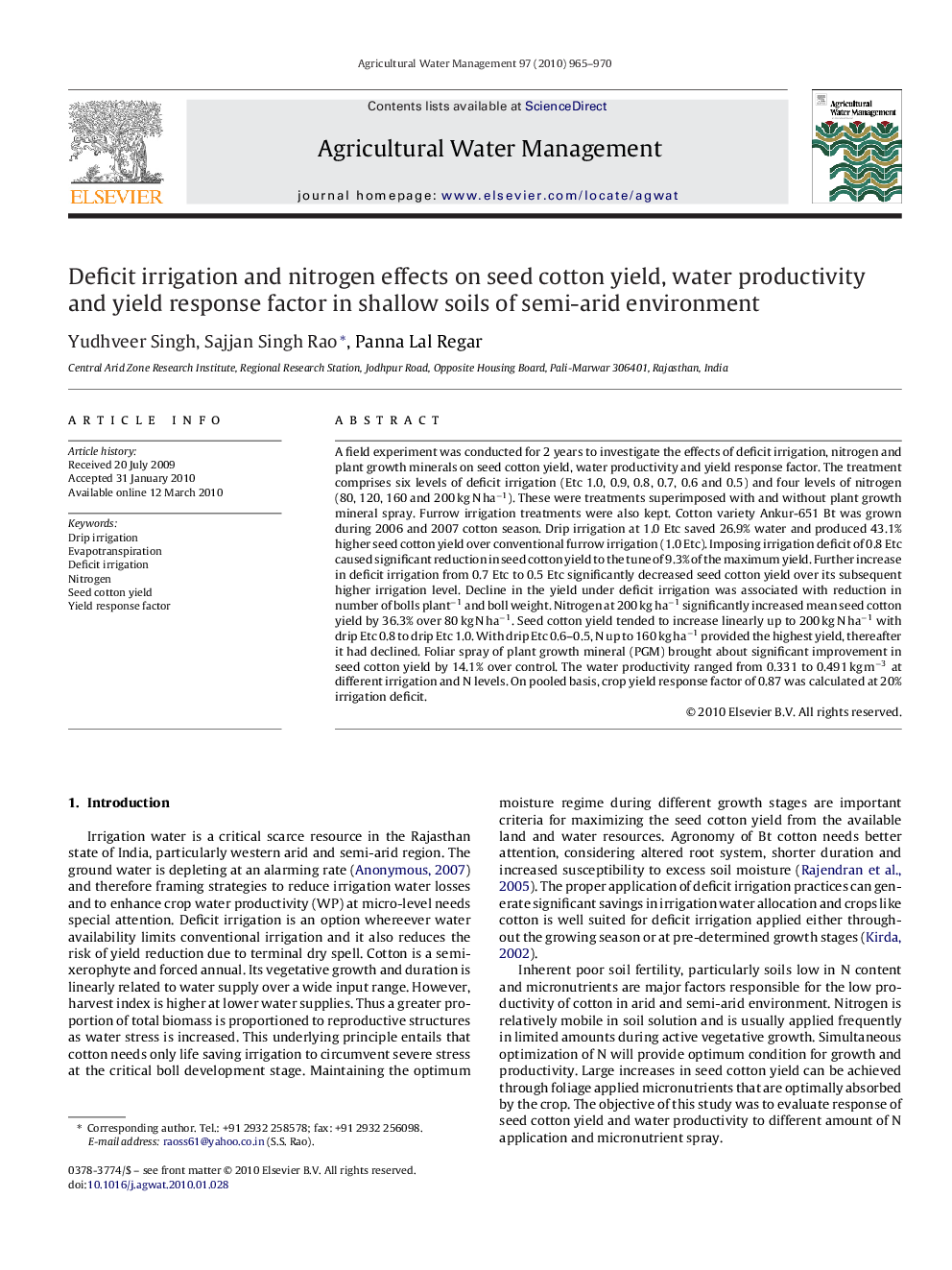| Article ID | Journal | Published Year | Pages | File Type |
|---|---|---|---|---|
| 4479444 | Agricultural Water Management | 2010 | 6 Pages |
A field experiment was conducted for 2 years to investigate the effects of deficit irrigation, nitrogen and plant growth minerals on seed cotton yield, water productivity and yield response factor. The treatment comprises six levels of deficit irrigation (Etc 1.0, 0.9, 0.8, 0.7, 0.6 and 0.5) and four levels of nitrogen (80, 120, 160 and 200 kg N ha−1). These were treatments superimposed with and without plant growth mineral spray. Furrow irrigation treatments were also kept. Cotton variety Ankur-651 Bt was grown during 2006 and 2007 cotton season. Drip irrigation at 1.0 Etc saved 26.9% water and produced 43.1% higher seed cotton yield over conventional furrow irrigation (1.0 Etc). Imposing irrigation deficit of 0.8 Etc caused significant reduction in seed cotton yield to the tune of 9.3% of the maximum yield. Further increase in deficit irrigation from 0.7 Etc to 0.5 Etc significantly decreased seed cotton yield over its subsequent higher irrigation level. Decline in the yield under deficit irrigation was associated with reduction in number of bolls plant−1 and boll weight. Nitrogen at 200 kg ha−1 significantly increased mean seed cotton yield by 36.3% over 80 kg N ha−1. Seed cotton yield tended to increase linearly up to 200 kg N ha−1 with drip Etc 0.8 to drip Etc 1.0. With drip Etc 0.6–0.5, N up to 160 kg ha−1 provided the highest yield, thereafter it had declined. Foliar spray of plant growth mineral (PGM) brought about significant improvement in seed cotton yield by 14.1% over control. The water productivity ranged from 0.331 to 0.491 kg m−3 at different irrigation and N levels. On pooled basis, crop yield response factor of 0.87 was calculated at 20% irrigation deficit.
